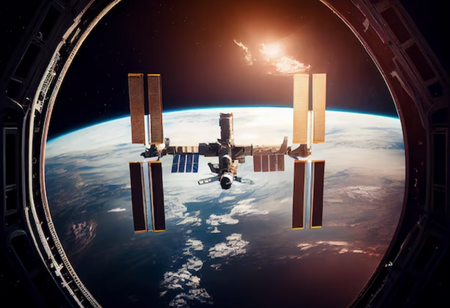ISS Astronauts Welcomed the New Year 16 Times: A Celestial Celebration in Space
By Consultants Review Team
 As Earth embarks on another orbit around the sun in 2024, the International Space Station (ISS) astronauts experienced a truly extraordinary celebration of New Year's, witnessing the sun rising and setting a remarkable 16 times in a mere 24 hours.
As Earth embarks on another orbit around the sun in 2024, the International Space Station (ISS) astronauts experienced a truly extraordinary celebration of New Year's, witnessing the sun rising and setting a remarkable 16 times in a mere 24 hours.
NASA highlights this celestial phenomenon, emphasizing that the ISS, hurtling through space at an astonishing speed of about 28,000 kilometers per hour, completes a full orbit around our planet every 90 minutes.
This swift orbit not only underscores the remarkable velocity of the ISS but also grants astronauts the unique privilege of ushering in the New Year multiple times as they traverse various time zones during their continuous journey. In contrast to Earth's conventional 12-hour light and 12-hour darkness cycle, ISS astronauts navigate a distinctive 45-minute cycle of daylight succeeded by 45 minutes of darkness. This uninterrupted oscillation occurs 16 times each day, resulting in a total of 16 awe-inspiring sunrises and sunsets during their orbital voyage.
ALSO READ: ISRO Rings In 2024 With Groundbreaking X-Ray Polarimeter Satellite Launch
This continuous transition between day and night on the ISS provides an ideal environment for scientific exploration. Astronauts leverage this distinctive aspect to conduct experiments across diverse fields such as microbiology and metallurgy, yielding invaluable insights not possible within Earth's traditional day-night cycle.
Despite adhering to Greenwich Mean Time (GMT) for scheduling consistency, the perpetual oscillation between day and night poses challenges for astronauts in terms of maintaining circadian rhythms. Amidst these challenges, one of the most remarkable aspects of their mission is the breathtaking panoramic views of Earth's horizons and the unparalleled experience of celebrating New Year's Eve not once, but an astonishing 16 times within the unique orbital perspective of the ISS.







